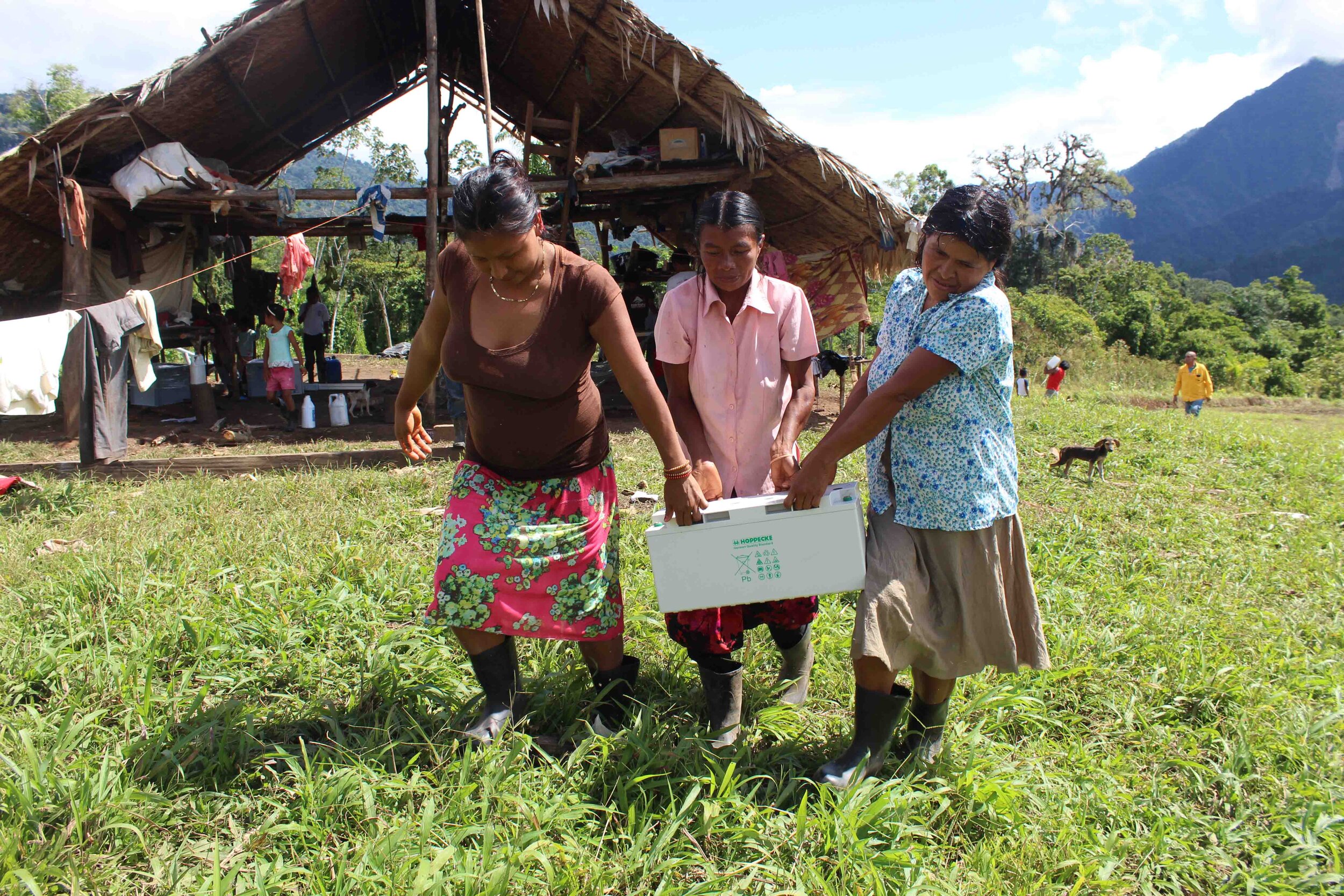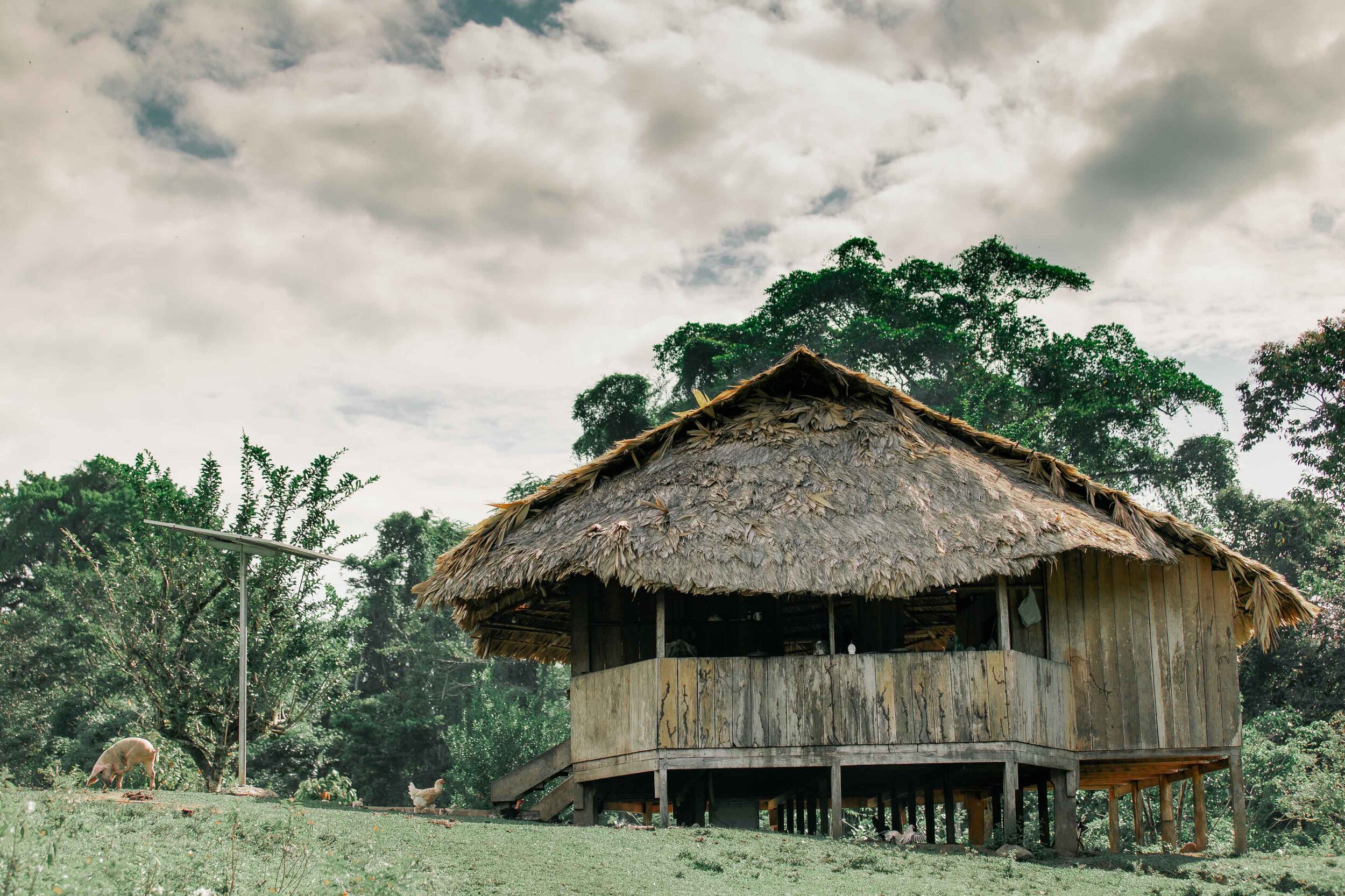We have partnered with the local indigenous organization ‘Asociación de Desarrollo Integral del Territorio Talamanca Cabécar’ (ADITICA) and the Cabécar communities to bring light and electricity to indigenous families living deep in the jungle mountains with no road or river access. The Cabécar Indigenous Nation in Costa Rica inhabits the most remote places of the country. I, as a Costa Rican, even dare to say that very few people in my country know that there are families living in the lush and mighty mountain tops of this great forest. Costa Rica is a small country, but when it comes to its jungle, a whole new Universe opens up!


The vast mountain range is home to numerous Indigenous families who do not have access to electricity. At times, the families use candles or flashlights, but only when they are fortunate enough to buy them. Most families have to walk through the jungle for several hours, if not multiple days, sometimes even weeks, to reach the nearest road access that leads to the closest town.
The Cabécar communities organize life without a monetary system and families usually do not have any income. When they do, it is extremely low, a few dollars per family per month which is barely enough to buy a candle or to restock their batteries for a rusty old flashlight.



The vast mountain range is home to numerous Indigenous families who do not have access to electricity. At times, the families use candles or flashlights, but only when they are fortunate enough to buy them. Most families have to walk through the jungle for several hours, if not multiple days, sometimes even weeks, to reach the nearest road access that leads to the closest town. The Cabécar communities organize life without a monetary system and families usually do not have any income. When they do, it is extremely low, a few dollars per family per month which is barely enough to buy a candle or to restock their batteries for a rusty old flashlight. Living without light is a real struggle and negatively impacts almost every area of life, especially for women and children who often carry the greater burden of energy poverty.

The rivers that flow through the green chain of mountains in this region are not navigable. They are fierce and have taken a heavy toll on the people. Transporting the equipment, tools, and materials of the solar home systems by canoes, as we did in the Amazon rainforest, was not an option in the jungle mountains in Talamanca. Batteries weigh almost 50 kg each, to which we must add the big solar panels, tubes, cables, mounting structures, and so forth.

As part of the solar energy initiative, we work on establishing strategic alliances that support the implementation of the projects. In Costa Rica, the government, through the Costa Rican Institute of Electricity (ICE), has supported the initiative by financing the necessary helicopter flights in and out of the mountain rainforest communities to transport the material and equipment as well as the project team. Once the material reaches the community, it is the families themselves who transport the materials to their houses. This means carrying all the heavy components through rivers, up and down muddy hill trails for hours until they reach their final destination.




In the last two years, we have built an amazing team of Indigenous solar technicians, including women empowerment facilitators and leaders. They devote their time and tireless efforts to go into the most remote communities to bring tremendous joy through the installation of the solar home systems and the creation of safe and trustworthy spaces for women and their families. On this, I will talk to you more in detail in another coming blog post!


The team has unstoppable stamina, full of energy, laughter, and good spirit as they live and work together for several weeks in a row in the different remote rainforest communities. Under the coordination of the solar leading Indigenous technician, each one of them knows exactly what to do. After walking for a complete day to reach one house, they start the installation process of the solar home systems right upon their arrival. No matter if it is raining, extremely hot and humid or almost dark. They know they are there to do one thing: provide light to the family for the first time in their lives. No matter how tired, wet, sored, or hungry they are, they make sure no family is left behind.




Solar energy for the Cabécar means to have more sustainable and more self-determined development opportunities. Our initiative shows that the use of innovative technology can go hand in hand with honoring and protecting ancestral Indigenous cultures and cosmovision. The project is community-owned and led by a new generation of Indigenous young leaders who are the present and the future of the great forests and the communities who have inhabited them for thousands of years.


As the solar energy initiative grows, so do our ‘solar families’ and leading technicians. They are always ready for their next mission and excited to continue working together to (self-)empower Indigenous Nations by creating sustainable access to renewable energy and powering their lives in the ways they want to live. Thanks to their committed and resilient work, tropical forests, which absorb more than half of the world’s carbon dioxide, are being protected and guarded by Indigenous people who are strengthened to continue to live in harmony with and protect their ancestral homelands. Their survival, and ours, depend on that.


